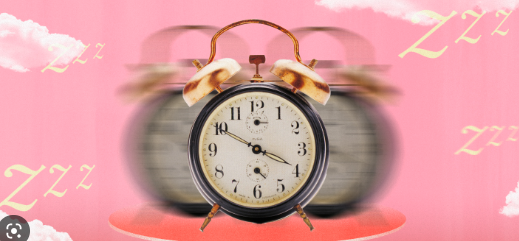Most Americans, including Illinois residents, will shift their clocks ahead by an hour this weekend. Signaling warmer temperatures and brighter days ahead.
The official time change will take place at 2 a.m. Sunday. With clocks jumping forward to 3 a.m. in states that observe daylight saving time.
Under provisions of the Energy Policy Act of 2005, which amende the Uniform Time Act of 1966. Daylight saving time begins every year on the second Sunday in March. That time change will remain in effect until the first Sunday in November, under the law.
Daylight Saving Time Begins Sunday. When to Set Your Clock Forward
According to officials. While we’ll see more hours of daylight, that’ll come with a tradeoff – one less hour of sleep.
Here’s everything you need to know about DST, including its backgroun. The controversy surrounding it and how to cope with losing some vital sleeping time.
When does daylight saving time start?
Under provisions of the Energy Policy Act of 2005, which amende the Uniform Time Act of 1966. Daylight saving time will begin on the second Sunday in March, which in 2023 will fall on March 12.
Daylight Saving Time Begins Sunday. When to Set Your Clock Forward
When does daylight saving time end?
Daylight saving time will end at 2 a.m. on Nov. 5, 2023, in what is known as the annual „fall back.”
What is daylight saving time?
Daylight saving time is a changing of the clocks that typically begins in spring and ends in fall. In what is often referred to as „spring forward” and „fall back.”
Under the conditions of the Energy Policy Act of 2005. Daylight saving time starts on the second Sunday in March and ends on the first Sunday in November.
On those days, clocks either shift forward or backward one hour.
But it wasn’t always that way.
Clocks used to spring ahead on the first Sunday in April and remaine that way until the final Sunday in October, but a change was put in place in part to allow children to trick-or-treat in more daylight.
Some people like to credit Benjamin Franklin as the inventor of daylight saving time when he wrote in a 1784 essay about saving candles and saying, „Early to bed, early to rise makes a man healthy, wealthy and wise.” But that was meant more as satire than a serious consideration.
Germany was the first to adopt daylight saving time on May 1, 1916, during World War I as a way to conserve fuel. The rest of Europe followed soon after.
The United States didn’t adopt daylight saving time until March 19, 1918. It was unpopular and abolished after World War I.
On Feb. 9 ,1942, Franklin Roosevelt institute a year-round daylight saving time, which he called „war time.” This lasted until Sept. 30, 1945.
States could still exempt themselves from daylight saving time, as long as the entire state did so. In the 1970s, due to the 1973 oil embargo, Congress enacted a trial period of year-round daylight saving time from January 1974 to April 1975 in order to conserve energy.
What happened with the Sunshine Protection Act?
Under legislation unanimously passed by the Senate last year known as the Sunshine Protection Act, the seasonal changing of clocks would effectively be eliminated in the U.S., except for Hawaii and parts of Arizona.
Overall, thoughts on the potential shift vary.
The Sunshine Protection Act was introduced by Sen. Marco Rubio, R-Fla., who suggested it would reduce crime, encourage kids to play outside and lower the risk of heart attacks and car accidents.
„There’s some strong science behind it that is now showing and making people aware of the harm that clock-switching has,” Rubio said on the Senate floor in March, NBC News reported.
A 2020 study found that fatal traffic accidents in the U.S. rose 6% in the week after daylight saving started. Other studies have found that the switch to daylight saving brings small increases in workplace injuries and medical errors in the days following the change. A 2019 study, meanwhile, found that the risk of heart attacks went up in the week after clocks sprung forward, though other research did not find such an increase.
Schakowsky said she has also heard from constituents who prefer longer daylight hours and as a result support permanent daylight saving time.

